Gypsophila perennial: description, reproduction and care
Perennial gypsophila belongs to the category of semi-shrub or herbaceous plants. Due to its original appearance, this plant is widely used in the arrangement of bouquets. It has very small flowers, which can be of various colors (pink, purple, white, etc.), as well as long leaves of small size. The gypsophila bush resembles a ball, which will help to give originality to any landscape design when growing this plant in a flower bed. This plant grows rather quickly, so it is necessary to avoid its proximity to weaker plants, as this will lead to their death.
Content:
Features of growing gypsophila
There are several ways to grow a plant. The most common of these are seed cultivation, cuttings or seedlings.
In order to grow gypsophila from seeds, you must:
- Collect them in the autumn.
- Seed planting is done in open ground at the end of April or at the beginning of May.
- You can also sow the seeds of this plant in the fall.
- Seeds that have already grown must be transplanted to the site next spring.
- This plant is planted in the ground at a distance of 30-40 centimeters from one another.
In the event that you decide to propagate the plant in seedlings:
- It is necessary to plant its seeds under glass in early spring.
- Landing, as a rule, is carried out in a wooden box, which is covered with glass.
- The seeds germinate within two weeks.
- If the gypsophila rises are dense, then they must be thinned out so that there is a distance of 15 centimeters between them.
- It is necessary to transplant seedlings into the ground only after the appearance of one leaf on it.
Achievement of a full-fledged decorative effect of a plant occurs only in the third year after its planting in the ground.
Propagation of gypsophila by cuttings:
- Produced in late spring.
- For this, young shoots are taken, which are planted in a film, which significantly speeds up the germination of the plant.
- If you plant a plant in this way, then they need to provide shading, as well as timely watering.
- But at the same time, waterlogging of the soil is unacceptable, since the cutting can rot.
Also new gypsophila plants can be obtained by dividing the bushes:
- To do this, you need to dig out a plant bush, divide its root system into several parts and plant it in the ground.
- This procedure can be performed both in spring and autumn.
Gypsophylla can be propagated by any of the above methods, which is explained by the easy survival rate of the plant.
Plant care
Gypsophylla perennial is a fairly unpretentious plant, but it still requires care.
This plant is quite frost-resistant, but in winter it is best to cover them with a layer of earth. This plant does not like light at a young age, but when it gets a little stronger, it needs to provide excellent light. Excessive moisture of perennial gypsophila is beyond the power. Therefore, excessive watering of this plant is not worth it. In the event that an inflow of groundwater occurs, the gypsophila may die.
It is necessary to plant a bush in light sandy soils that are mulched.
If there is not enough lime in it, then it is necessary to add it to the soil. By planting this plant in the correct soil, you can ensure the maximum decorative effect of this plant. Hypesophylla grows very well in the neighborhood of marigolds, pride, escholzia.
In early spring, it is necessary to sow or plant seedlings of perennial gypsophila:
- It is necessary to plant this plant in the soil, which is characterized by a high level of water resistance.
- If the plants are young and have not yet matured enough, then at the beginning of summer (before flowering) it is necessary to install supports that will protect the plant from the soil as a result of the high level of severity of the flowers.
- This action will help maintain the correct spherical shape perennial gypsophila.
- In order for new shoots to form, it is necessary to prune it in the summer immediately after the end of the flowering period.
- In autumn, even before the first frost, this plant is mulched. It is covered with bark or leaves, which protects it from damage and death.
Caring for perennial gypsophila is quite simple. That is why it is possible to preserve the correct shape and decorativeness of this plant without making any special efforts.
Plant diseases
The most common diseases of this plant are gray rot, jaundice, stem rot, and nematodes.
- With the disease of gypsophila with gray rot, small gray spots appear on the leaves of the plant. The disease spreads in the summer (at temperatures from 5 to 30 degrees). Rot appears on the leaves or stalk of gypsophila. The second option can lead to rotting and death of the plant. With this disease, it is necessary to remove all affected areas of the plant, and also treat it with a solution of copper sulfate.
- The first signs of jaundice in gypsophila are yellowing of the leaves, as well as an increase in the number of buds with deformed flowers. If a young plant is affected by this disease, then they are characterized by a whitish color. Also, this disease is characterized by the appearance of curly leaves, a change in the color of the shoots. When jaundice appears in gypsophills, it is urgent to remove the affected plants and treat the flower bed with copper sulfate.
- The nematode is characterized by damage to the root of the plant. It is a pest that sucks the juice out of the root. Outwardly, it is very difficult to identify this disease. The only thing that can be noticed is the lag in the growth of the plant, as well as the curling of the leaves and their color change to yellow or brown. When this disease appears, it will be most rational to treat perennial gypsophila with poisons, otherwise it may die.
In measures to prevent the disease, gypsophillus must be weeded in a timely manner, as well as monitor the condition of its leaves and stems.
It is also necessary to actively combat sucking insects and periodically change the planting site. Compliance with the rules of care for perennial gypsophilla will lead to a very beautiful bush.
More information can be found in the video.




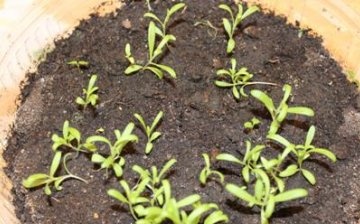
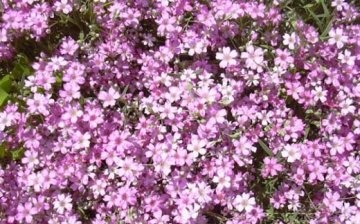
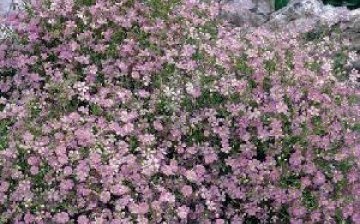




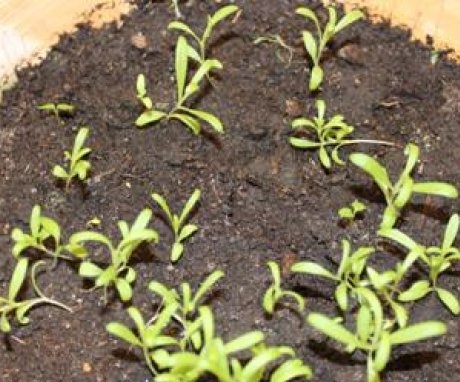

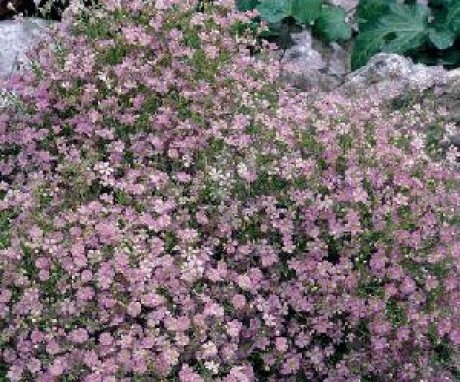
I planted a plaster of Paris office perennial in the rose garden. The combination of an airy white cloud and roses is exceptional. Only one problem: the pituitary gland grows very powerfully and suppresses roses, so you should not overdo it. I have to cut off the extra shoots. I wanted to remove a couple of bushes - it wasn’t there. Sits very firmly in the ground, you can disturb the roots of roses. In general, a magnificent plant, decorative all season, and even smells wonderful.
I beg your pardon, the editor substituted the wrong words for the word "gypsophila". And I don't see the opportunity to edit.
I understand that this plant is not resistant to frost at all and those who live in colder climatic conditions should think about other varieties of beautifully flowering shrubs.